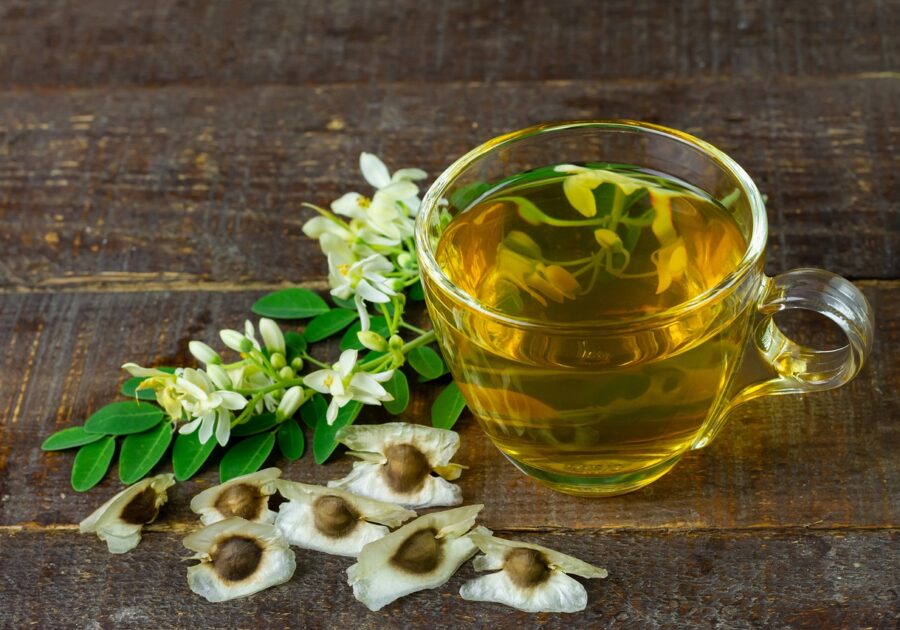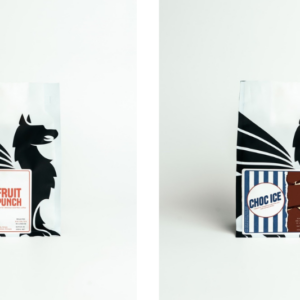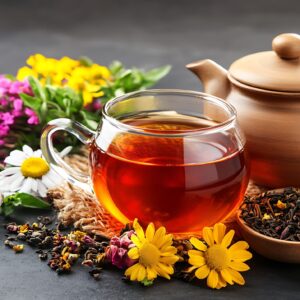The Preference for Non-Camellia Sinensis Teas is Growing

Credit: Pixabay
The demand for non-Camellia sinensis teas is steadily growing in the European Union (EU) and the Americas these days due to the growing trend of premiumisation and the ever rising popularity of so-called ‘new’ teas in the Western world.
Tea has been one of the most popular hot beverages in both Europe and the Americas regions since the beginning of 1990s. However, if in the past more local customers preferred traditional Camellia sinensis teas than during the 2000s, the situation has changed with the massive arrival of various ‘new’ teas on the market and the significant expansion of the range by major producers and retailers associated with it.
Representatives of tea associations of several major Western countries confirmed the current market trends.
Shabnam Weber, president of the Tea and Herbal Association of Canada, explained the ever growing popularity of non-Camellia sinensis teas in Canada and North America. “‘New’ teas, along with botanicals are a continuing growing category in Canada. For the most part, the traditional botanicals are those more readily available and therefore see the greatest growth. Functional botanicals, however, are definitely getting a lot of attention. Consumers are looking for healthful products and tea is a natural go-to.”
Weber added that the demand for healthy products continues to rise in Canada and the entire North American region and new teas will continue to benefit from this demand. She noted that new tea consumption has seen steady growth in Canada and she anticipates that to continue as younger consumers turn to tea and older consumers strive to stay healthy.
Mexico & Brazil: Young Tea Markets
The demand for new teas is also growing in Mexico, which has never been among the major tea- consuming regions in North America. Still, since the beginning of 2020s, the country has been experiencing a sharp growth in demand for tea, thanks to the rising popularity of various herbal/botanical teas. One example is chamomile, which is the botanical most produced in the country — almost 92 percent of which comes from the State of Mexico.
Currently, the overall tea sector in Mexico is estimated at about USD $80 million and 20,000 tonnes in volume terms. This is one of the lowest figures in Central and Latin America. However, according to predictions of some local analysts, the market is expected to exceed $100-110 million in 2025, thanks to rapidly growing demand and consumption of non-Camellia sinensis teas among local population, despite their generally higher cost. As the country continues to experience the positive consequences of nearshoring and with the arrival of the new President, Claudia Sheinbaum, the purchasing power of local people is steadily growing, which contributes to the growth of demand for premium teas.
In South America, the demand for new teas has also increased in Brazil, despite its status as the leading coffee producer in the world. According to the Brazilian Tea Association (ABChá) and some local media reports, the tea sector of the country currently consists of more than 100 companies, while in recent years a number of new players have expanded into the sector, with the majority focusing on the production of non-Camellia teas.
That led to a significant growth of the local range. In accordance with the recent report in the Brazil media, in recent years, the range of tea available in the Brazil market has significantly expanded, mainly through the combination of fruits or the use of native plants such as yerba mate. Brazil’s tea sector overall is growing rapidly, especially in the premium herbal and fruit tea segment, driven by young, urban consumers seeking healthier lifestyle habits. As a rule, they prefer low-calorie, preservative-free beverages associated with relaxation and well-being.
Most tea production in the country is located in the state of São Paulo, with the Ribeira Valley as one of the tea hubs. At the same time, another major tea centre is Rio Grande do Sul, the most Southern state of Brazil, which supplies its output throughout the country and abroad.
Non-Camellia Sinensis Tea Production Rises
The production of non-Camellia sinensis teas has become a priority for major tea producers, many of which are focusing on the development in the EU region.
An example is Hälssen-Lyon, one of the largest tea companies in Germany and the EU, which has significantly expanded its range by producing more various fruit and herbal teas. Steffen Schmucker, tea director of Hälssen-Lyon, said the demand for these teas is steadily growing both in Germany and other EU states, which contributes to the growth of the company’s business.
“Trading and processing fruits, herbs and spices has long been an important part of Hälssen & Lyon’s business. We offer them as mono components or use them as ingredients for the numerous fruit and herbal infusions or tea blends that we create and produce for international customers — adapted to the preferences of the respective market, ” said Schmucker.
Regarding further prospects of non-Camellia teas in Europe, Schmucker expects a further growth in demand and increase of market share of these teas. “We expect the demand in Germany and Europe will continue to grow. However, it can be said that demand in the German market has long been one-third tea and two-thirds infusions.”
He said that one reason for the expected growth in demand is that many people today are paying more attention to their health and therefore prefer decaffeinated alternatives to conventional tea. “Herbal, fruit and other infusions offer a wide variety of flavours – from fruity to spicy – and are often credited with health benefits such as calming, digestive or anti inflammatory properties.”
Schmucker said that another contributor to the growth is consumer demand for natural products without artificial additives continues to increase. “Herbal and fruit infusions often fulfill this requirement and are perceived as sustainable, especially when grown organically. The influence of other cultures has also
contributed to the popularity of alternative teas. Tea-like products such as mate (South America), rooibos (South Africa) or matcha (Japan, although derived from Camellia sinensis) have been brought into the spotlight by global networking and trends such as ‘superfoods’,” he said, adding that ayurvedic and medicinal herbal infusions from India and traditional European medicinal plants are also gaining in popularity. “Brands and products are picking up on these trends and starting to reposition themselves accordingly, often with aesthetic and emotional appeal.”
Representatives of Wollenhaupt, another major German and European tea company, share a similar sentiment. Recently, Wollenhaupt has significantly strengthened its positions both in the domestic non-Camellia tea markets and overseas, and is now planning to expand its range in the near future. Karsten Wiese, an official spokesperson, said Wollenhaupt already offers a variety of tea blends and mono herbs outside of Camellia sinensis. These include mate, herbal teas, rooibos and honeybush blends. “We offer rooibos and honeybush in different leaf grades with various certificates. According to our findings, the demand for rooibos is stable, but tending to decline slightly. We believe this is due to the strong price fluctuations in recent years and the associated unpredictability for large customers. [Additionally,] the benefits of rooibos tea are not in the focus of buyers at the moment.”
Wiese noted that honeybush is more of a niche product with a smaller market share. “However, honeybush is a very interesting product for connoisseurs as it has similar properties to rooibos but is noticeably more [flavourful].”
Another emerging non-Camellia sinensis tea is moringa. Christian Plate, another Wollenhaupt spokesperson who is responsible for this category, said the current demand for moringa remains slightly lower than initially expected figures in most of Western markets. “Moringa is still popular, but the demand for it is currently at a stable level. The situation is different with mate, which we use as a mono variety but also in tea blends. There has been a recognisable increase in demand [in Germany] in recent months. Lemon myrtle, lime blossom leaves, lime leaves and stevia leaves are also popular and frequently used at the moment. As a natural sweetener, stevia is polarising, but we have noticed that demand is increasing among some customers.”
In addition to Germany, the demand for non Camellia teas is steadily growing in the majority of other Western European countries. One such country is France, which is experiencing an overall boom in premium new teas. In fact, in the last couple of decades, tea has become one of the most popular hot beverages in the country. The market has evolved from basic tea bags to high-end new teas, with the latter currently enjoying the biggest demand. This is despite the fact that during the 1980s tea was consumed only by a limited number of enthusiasts.
According to data from France’s tea industry associations, in value terms, the overall tea market of the country exceeds EUR €500 million, the bulk of which (60-65 percent) account for non Camellia sinensis teas. The demand for such teas in the country is steadily growing although the overall per capita consumption of tea in the country remains generally small, not exceeding 250gr per year (compared to 2kg in case of UK) . In general, the overall tea consumption in the country is estimated at 30,000 tonnes per year, a significant part of which is new teas.
Despite the growing popularity of non-Camellia sinensis teas such as rooibos, honeybush, and moringa, there is no surge in sales. “In general, we have found that there are no significant differences in sales of the above-mentioned tea blends and ingredients within Europe,” said Plate. “Apart from mate, we do not currently see any special non-Camellia sinensis teas that are recognisably increasing in popularity.”






